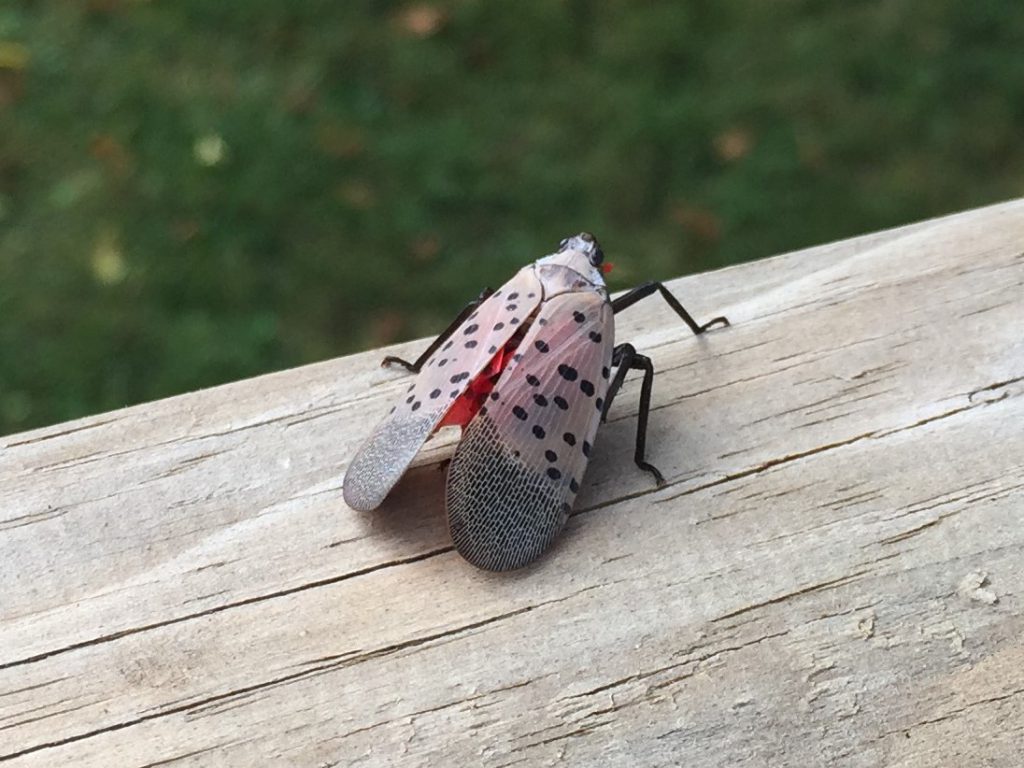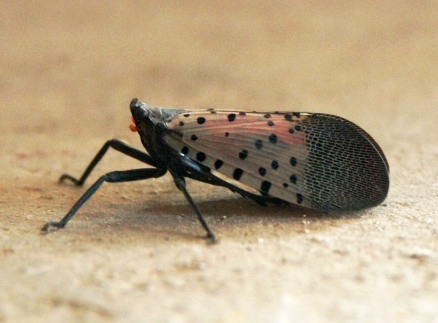
Have you heard of the brightly-coloured insect wreaking havoc across the mid-Atlantic United States?
Spotted lanternfly (Lycorma delicatula) is an insect from China that is considered an extremely destructive invasive species in North America. Spotted lanternflies feed on over 70 plant and tree species, depleting their sugar supply and causing ruined or mealy fruit in species such as grape and apple.
Spotted lanternfly has been detected just across the border from Niagara Falls, Ontario in the Monroe and Erie Counties of New York. In Pennsylvania, where spotted lanternfly first became established, the infestation is so severe that quarantine zones have been established in 14 counties. It’s our job to make sure spotted lanternfly never gets to Canada.
While this invasive insect has not been found in Canada, the proximity of Ontario to some New York detections, where individual adults were intercepted in shipments, is a major concern. Fruit trees and grapevines are especially preferred hosts of spotted lanternfly. Vineyards in Pennsylvania have experienced 45% – 100% loss of wine grape crops, such as Pinot Noir and Chardonnay, since the initial detection of spotted lanternfly in 2014. Insecticide application in some vineyards and orchards in the affected areas have gone from four applications per season to up to 14 applications, increasing industry expenditures and potential costs to the environment (Urban et al. 2017; PennState Extension 2019). If spotted lanternfly were to arrive in Canada, Ontario’s $4.4 billion wine industry and $4.2 billion fruit and vegetable crops would both be at risk.
It is not just the Canadian agricultural industry that should be concerned. Spotted lanternfly may feed on many species of ornamental and forest trees, including red maple and black walnut. While there have not been any reported tree deaths associated with spotted lanternfly, the way they feed creates unique and sticky problems. All life stages of spotted lanternfly feed on phloem tissues (where plants circulate sugars), often by the thousands. This causes SLF to excrete a sugary substance called honeydew – and thousands swarming in a tree cause this honeydew to “rain” from the canopy. This is an especially unpleasant problem in residential yards and public trails. Honeydew also accumulates at the base of trees, creating the perfect breeding ground for bacterial and fungal growth, which is both gross and can cause more harm to an already weakened plant. Residents who own infested trees face insecticide applications, increased cost and effort to clean up honeydew, and compromised enjoyment of outdoor activities.
So what can you do to help?
The most important thing you can do is watch for spotted lanternfly and report any potential sightings to the appropriate organization in your province or territory. Adult spotted lanternflies are about an inch long and hold their spotted beige forewings in a tent-like manner over their bodies. When open, their hindwings are bright red – but this is not often visible. Spotted lanternflies undergo four life stages (instars) before they become adults. The first three life stages are black with white spots and look similar except for increasing size (early young in the picture below). The fifth life stage is much more noticeable as it is larger, about ½ inch, and bright red with black and white spots (late young in the picture below).

Spotted lanternflies spread into new environments in two ways. The insects are only able to fly when they are adults and they’re not particularly great at it, but their feet are incredibly good at sticking to different surfaces. They have been known to hitchhike this way by hanging on to people and vehicles who move through heavily infested areas. The second most important way they spread is as eggs. Egg masses are very difficult to spot and can be laid on almost any material, including stone, cut logs, Christmas trees, rusty metal, boats, grills, and more. Egg masses are laid on an object then covered by a shiny, grey, putty-like material that darkens and turns brittle overtime. You can help prevent the spread of spotted lanternfly by buying and burning local firewood, checking your body and possessions thoroughly after visiting an infested area, and watching for egg masses especially during the winter.
Spotted lanternfly has the potential to seriously and negatively impact many Canadian industries and ways of life, at potentially huge economic, recreational, and social costs. For more information on this invasive insect and what you can do to help, check out our Forest Invasives Canada spotted lanternfly webpage or the PennState Extension website (for details on spotted lanternfly movement throughout the United States).
